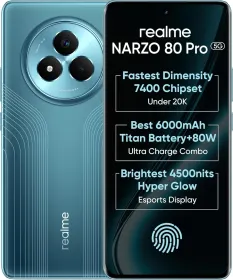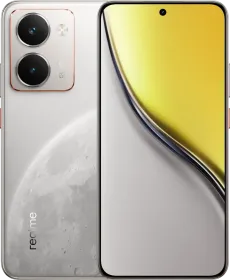With advancements in renewable energy, India stands at the forefront of a global energy evolution. Driven by several national initiatives, such as rooftop subsidies and schemes like PM-KUSUM, the country is experiencing exponential growth in solar installations. A portion of this growth comes from residential solar panel systems, which are becoming increasingly common.
Extending the Lifespan of Your Solar Panels in India’s Diverse Climates

Installing solar panels not only benefits the environment by reducing a household’s reliance on conventional sources of electricity but also yields financial benefits in terms of lower energy bills. However, the operational horizon often relies on how long the panels remain efficient, structurally sound, and operational in the prevailing weather conditions across the subcontinent.
The country’s vast geography presents environmental challenges that can impact the lifespan of solar panels. Factors like extreme heat, dust accumulation, moisture ingress, and water salinity can accelerate a solar panel’s aging. Depending on their size and capacity, solar panels are a substantial investment that turns profitable after a few years of constant usage.
Also Read: Rooftop Solar Pros and Cons For Indian Homes (2024)
India’s Diverse Climate And The Challenges It Poses For Solar Panel Owners
Extreme Heat
The optimal operational temperature (set under Standard Test Conditions) is 25°C. However, most of the Indian subcontinent experiences higher temperatures in the scorching summer months (typically from April to June). In fact, temperatures often exceed 40°C in the northern Indian plains, which significantly decreases a solar panel’s efficiency.
How does this happen? Solar panels are designed to convert sunlight into electricity using special semiconductor materials. Even though sunlight is the fuel for such materials, a severe increase in temperature (such as 10 to 20°C above the optimal operating range) can dramatically reduce the voltage produced, lowering the overall output.
Dust Air Pollution
The higher amount of dust particles in the air, along with other suspended particulate matter (like soot from traffic or industries), sand, grime, and pollen, can accumulate on the surface of solar panels. Over time, pollutants can settle as a layer over the photovoltaic cells in a solar panel, blocking sunlight or scattering it away, resulting in energy losses of 5-10%, or even higher.
Moisture
The Indian monsoon season brings heavy rainfall, high humidity, and strong winds, conditions that can cause damage to the critical components of a solar panel system, such as the junction box at the back of the panel and the metal frames and mounting structure. Further, any type of moisture ingress in the panel can lead to corrosion and cause severe damage to the panel.
Also Read: Uttar Pradesh Solar Subsidy in 2025: A Complete Guide
Getting The Right Solar Panel Can Help Maximize Its Life

Type of Solar Panel And Warranty
Monocrystalline solar panels are the most efficient, typically having an efficiency rating of around 20% or higher. While monocrystalline solar panels come with a warranty of over 20 years for performance, they have a higher operational temperature range of up to 85°C. In general, monocrystalline solar panels are believed to offer a higher lifespan.
However, monocrystalline solar panels are among the most expensive ones on the market. Then come the polycrystalline panels, which are more affordable but less efficient. While their efficiency is usually less than 20%, they are typically offered the same warranty (for performance), although they might produce less energy within the warranty period.
Additional Certifications
In addition to the quality of the solar panels, durability certifications such as IEC 61215 (for design and long-term performance), IEC 61730 (quality of safety measures), IEC 61701 (salt mist corrosion resistance), and IEC 60068-2-68 (resistance to blowing sand) should also be considered.
Solar panels also have official IP ratings for resistance against the ingress of dust and water.
Quality of Supporting Items And Installation
Make sure to get a galvanized frame for the panels, as it has a layer of zinc that prevents rusting, especially in humid areas. In addition, avoid cutting corners in the quality of DC wires used to connect the system. Use UV-resistant, weatherproof, DC-rated cables.
Avoid spending money on third-party installations, as the personnel might not be aware of the particulars related to the solar panel and could end up damaging the expensive system. In addition, improper installation can void the warranty, one of the most crucial aspects of installing solar panels.
Also Read: What is Solar AC and How Does It Work?
Easy Access To Maintenance
Before installing the solar panel, ensure that the company or manufacturer you’re dealing with provides adept post-installation services. Ask them about the regular maintenance process, the cost of cleaning the panels, and the costs associated with replacing parts that are not covered under the warranty.
Place Of Installation
It is during the first round of visits that the solar solutions providers should inspect the rooftop and suggest a couple of installation locations.
Ideally, a solar panel should be placed in a space with consistent, unobstructed sunlight and proper ventilation. Further, they should also be away from shadows cast by surrounding trees or buildings. Last but not least, the solar panels should be accessible for maintenance.
To ensure proper ventilation, solar panels should always be placed on a heightened racking system, creating a channel underneath for air circulation. Additionally, the space under and around the solar panels should be clear of objects.
Proactive Care Measures For Maximizing Solar Panels’ Lifespan

Clean The Panels Regularly
Cleaning the solar panels is one of the simplest yet most effective ways to extend its lifespan. Before we begin, ensure you wash the panels early in the morning when they are not active. Washing the panels later in the day — when they are actively generating electricity (which makes them warmer) — can cause a rapid temperature decrease, potentially damaging the photovoltaic cells.
- Start by switching off the power to the panel.
- Next, wipe the surface of the solar panel with a soft, dry mop or a microfiber cloth to remove the dust.
- Use a low-pressure garden hose to remove dry leaves, bird droppings, accumulated grime, etc. It is also advised to use soft water (less than 250 ppm) to clean a solar panel.
- Prepare a mild cleaning solution using dish soap or another mild cleaning agent. Dip a soft sponge in the solution and gently wipe the surface. Don’t scrub the panel too hard.
- Once you’ve wiped down the entire panel, use the garden hose to clean it. While the inclination angle helps remove excess water, use a dry cloth to wipe off any droplets that may form on the surface.
While you can wash your solar panels occasionally, wiping off the dirt every few weeks or so could be more crucial.
Also Read: What is a solar water heating system and how it works?
Visual Inspections
While you’re wiping off the dust from your solar panel, perform a visual inspection of the entire module. Here’s a sample checklist that you can follow.
- If there is any dirt or dust accumulation, clean the panel with a soft cloth.
- Look for any visible chips or cracks on the panel’s surface.
- Check for discoloration or browning of the solar cells.
- Look for signs of condensation or moisture trapped under the glass layer.
- Inspect the metal frames used for mounting the solar panels.
- Identify any loose connections and get them fixed as soon as possible.
- Check for signs of pests or nesting.
- Ensure that there is proper drainage; water shouldn’t get clogged around the surface of the panels.
If you see any of the issues mentioned above, contact your solar solutions provider and take the required action.
Professional Maintenance
While regular cleaning by the owner is essential, occasional inspections by professionals can also help identify and remedy potential issues, extending the lifespan of your solar panel.
- Ask the professionals to check for any electrical issues concerning the connections, fuses, and all the other components associated with the solar panels.
- Professionals can also identify areas of increased resistance or hotspots and perform the required troubleshooting methods.
- Ask the technicians to measure the actual output of the solar panel and compare it to the expected performance (especially under the warranty period).
Protective Gears

According to a recent blog post published by Waaree Energies, anti-reflective coatings (ARC) help absorb more sunlight, decrease dust adhesion, and possess hydrophobic capabilities that prevent water from settling and leaving stains on the panel. Such coatings are available on a square foot basis, ranging between Rs. 60 to 100 per square foot (or even higher).
However, the ARC coating and other nano-coatings sold on Amazon should be more effective on older solar panels than the ones that already have a hydrophobic coating in place.
Globally, solar panel manufacturers also sell transparent protective covers that shield the surface of the panels from dirt, debris, bird droppings, and, most importantly, frequent hailstorms. However, we couldn’t find a seller providing such solutions for Indian buyers (yet).
Also Read: Bharat Mobility Expo 2025: India’s first Solar Car, Flying Car & More Innovations Showcased
Monitor The Solar Panel’s Performance Via Software
Some solar panel providers also allow you to monitor their performance via a smartphone app. The apps allow buyers to monitor any unusual patterns in energy generation and inform the support team in time.
Depending on the provider, you should be able to review the total energy generation, the generation pattern for the last few days (or months), and even forecasts related to weather and how they can impact energy generation through solar panels.
FAQs
How often should I clean my solar panel?
It depends on the weather conditions and the general amount of dust and pollutants in the area. Under normal circumstances, cleaning a solar panel twice a year should be enough. However, if you notice dust accumulations on the panels every two to three months, increase the frequency. The bottom line is to keep the surface as clean as possible.
Which is the best solar panel service provider?
There’s no one-solution-fits-all. The best solar panel service provider can differ depending on the size of your rooftop, the serviceable area, the cost of the panels, installation, energy efficiency ratings, and the overall warranty on the components included.
You can follow Smartprix on Twitter, Facebook, Instagram, and Google News. Visit smartprix.com for the most recent tech and auto news, reviews, and guides.

































